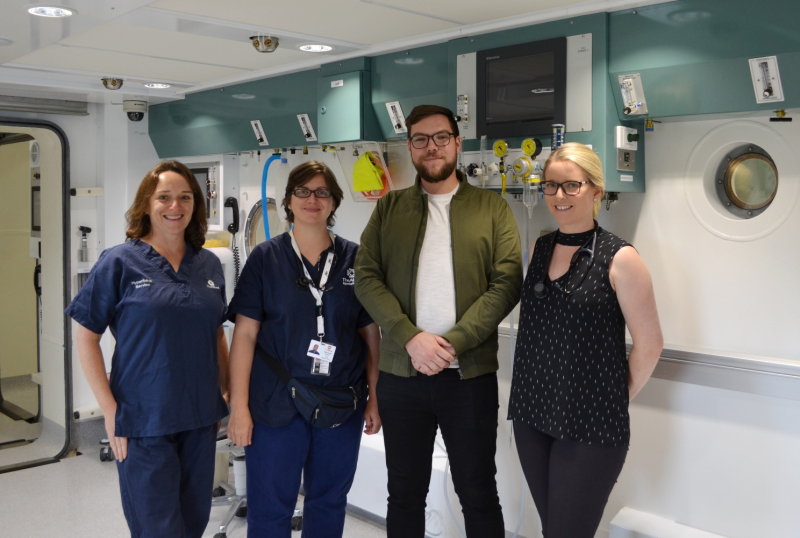Injured divers rely on hyperbaric medicine service

While diving with his family in New Caledonia in October, 24-year-old Liam Mangan-Smith ran out of air at 16 metres below the surface.
“At one point I remember everything going quiet and I realised that’s it,” said Liam.
Liam had to perform a rapid emergency ascent. A week later, back in Melbourne, he became progressively unwell.
“I was having trouble breathing, my chest was tight, I couldn’t walk up a flight of stairs without ending up on the ground,” he said.
After a visit to the GP and local hospital, Liam was urgently transferred to The Alfred and diagnosed with atypical decompression illness or an unusual case of the bends. Decompression illness is caused by inadequate decompression following exposure to increased pressure, causing bubbles to grow in the body’s tissue and bloodstream. These bubbles can also enter the lung circulation and travel to the brain, which can be fatal.
The Alfred provides Victoria's statewide hyperbaric medicine service, a life-saving treatment for people suffering from decompression illness (DCI).
Emergency and Hyperbaric physician Dr Bridget Devaney says more than a dozen divers present at The Alfred every year with DCI, with summer being a busy period.
“People want to get out diving at this time of year, as the water warms up, and we encourage anyone with symptoms after a dive to seek medical help as soon as possible,” Dr Devaney said.
At The Alfred, DCI patients receive Hyperbaric Oxygen Treatment (HBOT), which is the administration of oxygen at a pressure greater than atmospheric pressure. This compresses the bubbles that have formed in the body and increases the rate at which they are removed.
At 3am, Hyperbaric Registrar Dr Alex Parini oversaw Liam’s care in the hyperbaric chamber.
“He was very distressed because of the shortness of breath, but after the treatment we did a little test of walking up stairs and he was feeling immediate improvements,” said Dr Parini.
After his emergency ascent in New Caledonia, Liam had vomited, but otherwise “didn’t feel too bad”, so he continued with his holiday and more diving.
“Liam’s case could’ve resulted in much more serious complications, it could’ve been a lot worse,” said Dr Devaney.
Dr Devaney said some divers look for other reasons as to why they don’t feel right after a dive.
“They may think they just lifted a heavy tank or had a tough swim against current, looking for another explanation, especially if no one else in the group has symptoms.”
“But it’s important to remember that you’re more likely to have a full recovery if you come and seek help as soon as possible,” said Dr Devaney.
Liam says he’s learned a lot from his experience and is looking forward to more diving in the future.
The Alfred’s Hyperbaric Service cares for many patients in addition to those with a diving related injury.
HBOT can help people suffering from life threatening soft tissue infections, certain cases of severe trauma and problem non-healing wounds such as those resulting from diabetes or radiotherapy. HBOT stimulates healing and infection fighting processes in unique ways that can valuably enhance other therapies provided.
The facility includes three pressurised hyperbaric chambers, with enough space to treat our most unwell patients from ICU as well as providing comfortable room for up to twelve outpatients receiving routine daily treatments. There are also two monoplace chambers for individual patient treatments.
For more information about DCI please visit: https://www.diversalertnetwork.org/medical/faq/


